The Hitachi Global Foundation Asia Innovation Award is an award program launched in 2020 to promote science, technology and innovation that contributes to solving social issues and realizing a sustainable society in the ASEAN region.
This award recognizes individuals and groups that undeniably served public interests through their outstanding achievements in research and development (R&D) in the fields of science and technology, including their visions of an ideal future society and social implementation plans for R&D as a means of achieving SDGs.
In the fiscal year of 2023, we solicited research and R&D achievements from 27 universities and research institutions in 6 ASEAN countries (Cambodia, Indonesia, Laos, Myanmar, Philippines, and Vietnam) contributing to each of selected targets of Goal 1 (No Poverty) and Goal 7 (Affordable and Clean Energy).
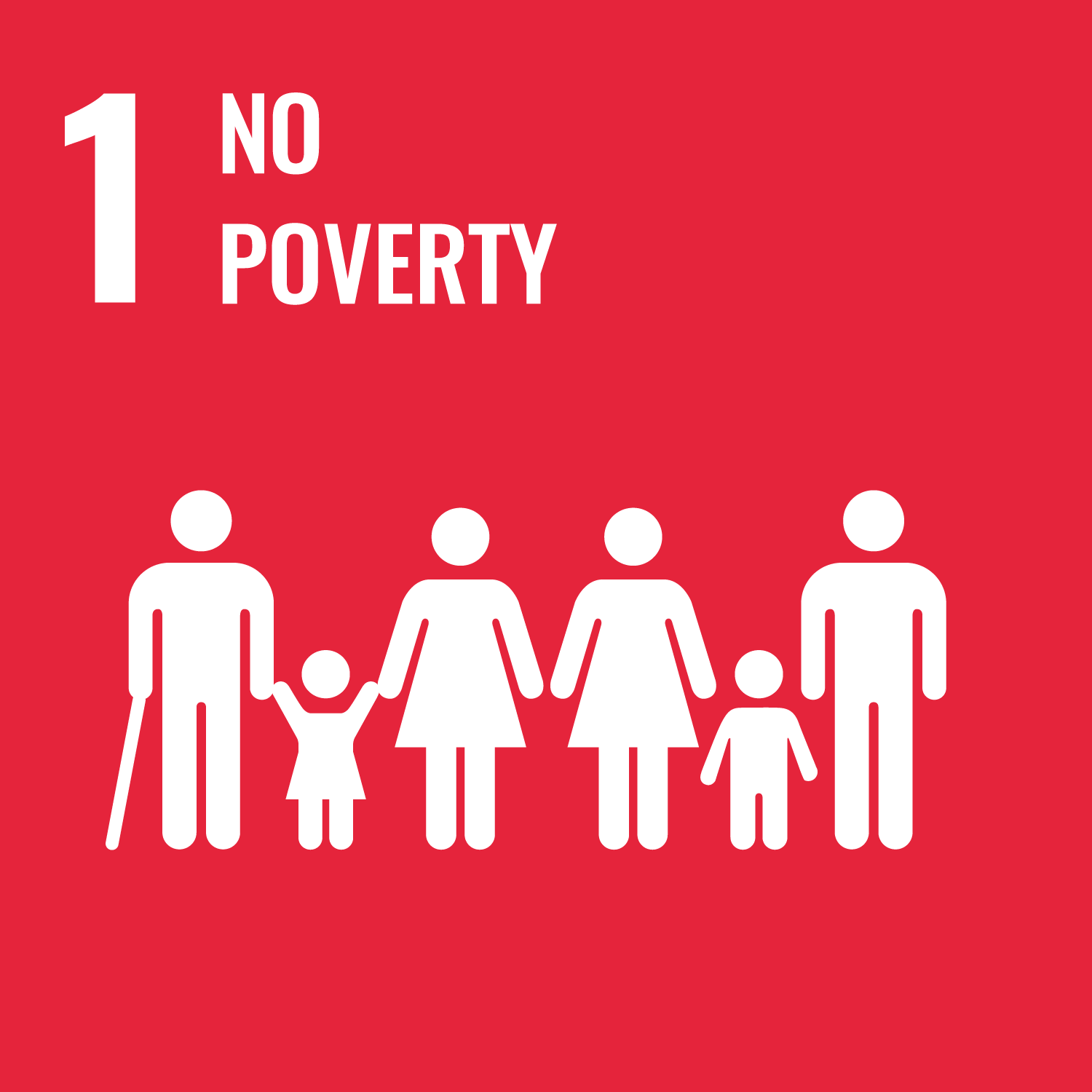
Goal 1 "No Poverty"
Targets 1.1 Eradicate extreme poverty, 1.2 Reduce at least by half the proportion of all people in poverty, 1.3 Achieve substantial coverage of the poor and the vulnerable, 1.4 Ensure to have equal rights to economic resources, as well as access to basic services, ownership and control over property, and financial services, 1.5 Build the resilience of the poor and those in vulnerable situations, 1.b Create sound policy frameworks to support accelerated investment in poverty eradication actions.
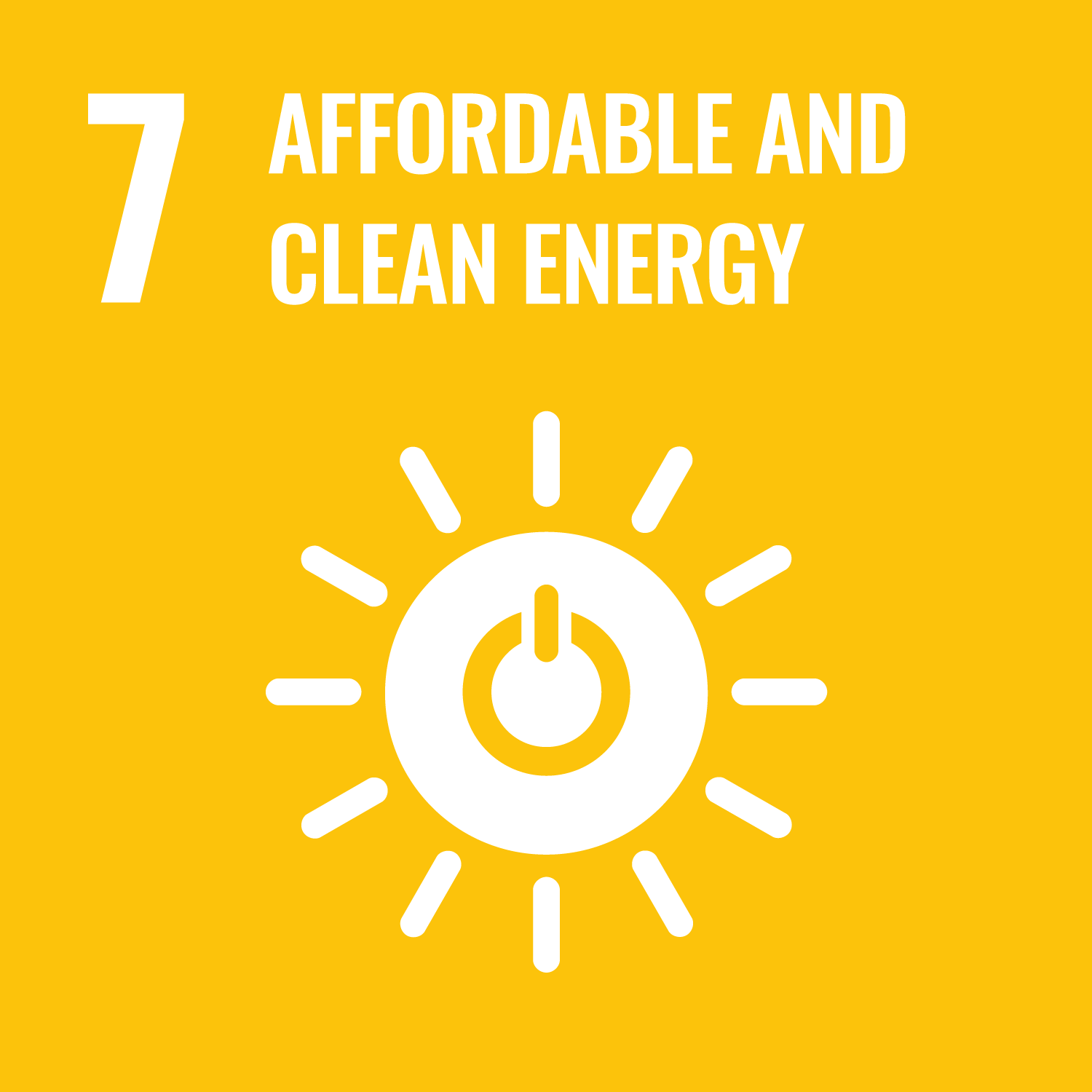
Goal 7 "Affordable and Clean Energy"
Targets 7.1 Ensure universal access to energy services, 7.2 Increase substantially the share of renewable energy, 7.3 Double the global rate of improvement in energy efficiency, 7.a Facilitate access to clean energy research and technology and promote investment, 7.b Expand infrastructure and upgrade technology in developing countries.
We received applications from eligible universities and research institutions by recommendation, and the 15 recipients were selected through a document screening, a selection committee, and an online interview by the selection committee.
We would like to introduce the selection committee members, the review by chairperson of the selection committee, the outline of the awardee's research, and awardee's greetings as follows.
Chair Monte Cassim, Professor
President, Chair of the Board, Akita International University
Yasuyuki Kono, Dr. Agri.
Vice-President for International Strategy
Professor, Center for Southeast Asian Studies, Kyoto University
Yuri Sato, Dr.
Executive Vice President, The Japan Foundation
Isao Shimoyama, Dr. Eng.
President, Toyama Prefectural University
Professor Emeritus University of Tokyo
Akira Maeda
Program Officer, Research Supervisor
Department of R&D for Future Creation, Japan Science and Technology Agency (JST)
Monte Cassim, Chairperson of the selection committee
I would like to report the selection process of The Hitachi Global Foundation Asia Innovation Award.
The Hitachi Global Foundation Asia Innovation Award is an award program launched in 2020 to promote science, technology, and innovation that contributes to solving social issues and realizing a sustainable society in the ASEAN region. This award has been recognizing individuals and groups that undeniably served public interests through their outstanding achievements in research and development (R&D) in the fields of science and technology, including their visions of an ideal future society and social implementation plans for R&D as a means of achieving the United Nation's SDGs.
Each year, the Foundation sets two goals and several relevant targets from the 17 SDGs and 169 targets. Applicants present their achievements in research and development that contribute to these goals and targets. They also submit a social implementation plan for their achievements describing their social vision for their country or the ASEAN region.
In fiscal year 2023, we solicited research and R&D achievements from 23 universities and 4 research institutions in 6 ASEAN countries (Cambodia, Indonesia, Laos, Myanmar, Philippines, and Vietnam) contributing to each of selected targets of Goal 1 (No Poverty) and Goal 7 (Affordable and Clean Energy).
This is the fourth year of this program, and we feel that the quality of applications has obviously changed. As awareness of the award has increased, more researchers are applying with a full understanding of the purpose of the award, and more industrial and technological research is being conducted in the area of poverty alleviation. In addition, this year, for the first time since FY2020, we received applications from Myanmar, and we are very pleased to be able to support them in academic terms and in R&D.
The Selection Committee conducted a rigorous selection process between September and October 2023, comprehensively evaluating applications, academic papers, other supporting materials, and online interviews, as well as considering the differences in national R&D capabilities. In the end, we selected a total of 15 research and R&D achievements (1 Best Innovation Award, 5 Outstanding Innovation Awards, and 9 Encouragement Awards) and recommended a total amount of 12,500,000 Yen for the approval of the President of the Foundation.
We hope that this award will be an opportunity to further accelerate the realization of the social implementation plans of the award winners.
|
Best Innovation Award
 "Optimizing the Performance of Lithium-Ion Battery Materials for Electric Vehicle to Support Net Zero Emission"  Target 7.2 7.3 7.a |
||
| Name | Anne Zulfia Syahrial | 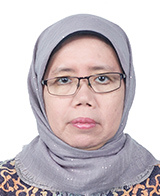 |
|---|---|---|
| Affiliation/Title | Professor Department of Metallurgy and Materials, Faculty of Engineering Battery Research Laboratory University of Indonesia (UI) |
|
| Country | Republic of Indonesia |
|
| Research Title | "Optimizing the Performance of Lithium-Ion Battery Materials for Electric Vehicle to Support Net Zero Emission" | |
| Social issue | The world is currently confronted with an energy crisis due to the diminishing reserves of fossil fuels. The excessive consumption of these fuels not only causes a depletion of resources but also contributes significantly to the escalation of greenhouse gas emissions, which are responsible for global warming and climate change. Several mitigation actions have been formulated such as renewable energy deployment, energy efficiency, and increase utilization of low carbon emitting fuel in achieving a net zero emission. | |
| Achievement of R&D | Electric Vehicle is one solution to reduce the CO2 emission and EV need batteries with high energy density and good cycle capabilities. Lithium-ion batteries (LiBs) technology to date is mainly concerned on electrode materials. With the development of electric vehicle in the automotive industry, the need for a large-scale power source with high energy density and good cycle capabilities must be achieved. Discovery of new materials and a deepening of fundamental understanding of their structure, composition, property, and performance relationships have been researched. Lithium titanate (Li4Ti5O12) is an alternative anode material for LiBs due to its excellent cycling stability, high power density, and improved safety compared to traditional graphite anodes. LTO exhibits a spinel crystal structure and can intercalate lithium ions into its crystal lattice without structural changes, which has been successfully synthesized by adding Si and Sn and it is optimized by activated carbon from coconut shells wasted in our research. | |
| Social Implementation | Increased use of fossil fuels without actions to mitigate greenhouse gases will have global climate change implications. Energy efficiency and increase use of renewables contribute to climate change mitigation and disaster risk reduction. The transportation sector contributed 60% to climate change and it is predicted produce around 502 million tons of CO2 in 2030 from burning fuel. This carbon emission is hazardous to the global environment, therefore Internal Combustion Engine Vehicles (ICEVs) that mostly use fossil energy must be gradually reduced and replaced by EV which used a battery as a source of electricity, because battery-powered vehicles emit low levels of pollutants, they can help to minimize air pollution. The use of EVs will support the net-zero carbon emission. EVs have emerged as an auspicious alternative to traditional vehicles as they offer a sustainable and environmentally friendly, thereby substantially reducing greenhouse gas emissions and promoting sustainable energy usage in the transportation sector. | |
| Social Impact, Contribution to the SDGs | Lack of access to energy supplies and transformation systems is a constraint to human and economic development. The SDGs 7 aims that human can access to affordable and clean energy can improve the quality of their life, such as it can help reduce poverty, improve health, and increase economic grow. The renewable energy power plant should be built and affordable to the people specially for charging LiB for EV, so the SDGS 7 can be realized in the future. | |
| Activities |
|
|
| Message from Awardee | Together we save the world from the effects of greenhouse gases by reducing CO2 emissions to achieve a clean and healthy environment for a better life to our next generation. Starting with reducing the use of conventional vehicles that use fossil energy and switching to electric vehicles or using public transportation with green energy. | |
|
Outstanding Innovation Award
 "Energy Management Solutions for Renewable Energy Technologies"  Target 7.1 7.3 7.a |
||
| Name | Erees Queen Barrido Macabebe |  |
|---|---|---|
| Affiliation/Title | Associate Professor, Chairperson Department of Electronics, Computer, and Communications Engineering Ateneo de Manila University (ADMU) |
|
| Country | Republic of the Philippines |
|
| Research Title | "Energy Management Solutions for Renewable Energy Technologies" | |
| Social issue | As renewable energy (RE) technologies become accessible to more people, emergence of household and community RE systems is expected. To maximize the benefits of RE, producers and consumers need to know how much energy their system produces and how much they consume so that they can employ energy management measures. | |
| Achievement of R&D | We developed monitoring systems and employed artificial intelligence (AI) and the Internet-of-Things (IoT) to contribute towards making energy systems efficient and provide data for consumer awareness to encourage energy conservation, management and optimize processes. The core of our design consideration is cost-effective technology. Thus, our solutions have to be affordable, efficient, and flexible than existing technologies. For instance, the energy monitoring systems can be used for a variety of applications, including solar PV, smart homes, and microgrid systems. This makes them more versatile than existing energy monitoring systems and can be made accessible to a wider range of users. | |
| Social Implementation | A startup was established to make the household energy monitoring system with AI available to the market. Currently, the team is working on lowering the cost and improving the AI functions. Working with community partners allows us to deploy our solutions to its intended users. For instance, a reconfigurable array was investigated to improve the power output of shaded solar PV modules. This system was deployed in a community center. Another solution, a multilevel solar dryer with monitoring system was deployed in a fisherfolk community. These deployments aim to obtain user feedback for system design improvements and process optimization. |
|
| Social Impact, Contribution to the SDGs | Our social impact and contributions to SGD 7:
|
|
| Activities |
|
|
| Message from Awardee | We envision a future where energy technologies powered by AI and IoT are available to households and communities such that energy management and conservation decisions are made using real-time data. This award is an affirmation that our team is aligned and is making significant contributions towards the SDGs. | |
|
Outstanding Innovation Award
 "Utilizing Eco-Friendly Biomass Briquettes (EFBB) by Transforming Waste into Practical Alternative Solid Fuel"  Target 7.1 7.2 7.3 7.a 7.b |
||
| Name | Kinnaleth Vongchanh | 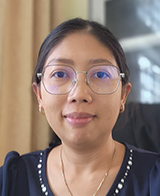 |
|---|---|---|
| Affiliation/Title | Head of thermal Lab. CEMAT program manager Department of Industrial and Mechanical Engineering Institute of Technology of Cambodia/ Research Innovation Centre (ITC-RIC) |
|
| Country | Kingdom of Cambodia |
|
| Research Title | "Utilizing Eco-Friendly Biomass Briquettes (EFBB) by Transforming Waste into Practical Alternative Solid Fuel" | |
| Social issue | In Cambodia, biomass accounted for 25.5% of TFEC in 2018. Biomass is used in both the residential and industrial sectors, including household use and textile-garment-footwear factories. However, the significant demand for biomass as an energy source contributes to deforestation. Additionally, the burning or disposal of biomass waste, such as dried tree leaves, sawdust, sugar bagasse, and wasted paper, results in wasted resources, exacerbates waste management issues, and increases greenhouse gas emissions from landfills. | |
| Achievement of R&D | The obtained average higher heating value (HHV) of 20 MJ·kg-1, along with favorable WRI and IRI values, underscores the viability of the briquettes. Notably, ash content, fixed carbon content, and volatile matter averaged at 6.9%, 17.3%, and 75.7%, respectively. The energy intensity (EI) stood at 21.6GJ·m-3, significantly surpassing that of raw material. During the 3-21 minutes timeframe, briquettes exhibited a burning rate and temperature of 28.7 g·min-1, 12.4 g·min-1, 407.6℃, and 414.3℃, respectively. Within the initial 40 minutes, briquettes matched or exceeded firewood in flame temperature, burning rate, moisture content, and fixed carbon values, suggesting their potential as a firewood substitute. | |
| Social Implementation | To ensure this finding positively impacts society, future activities involve measuring emissions, large-scale production, and testing of eco-friendly bio-based fuels (EFBB) in textile factory boilers. This includes exploring sustainable raw materials, establishing a continuous production process, and securing funding for a large-scale production line. These initiatives aim to enhance societal well-being by promoting environmental sustainability, fostering innovation, and driving economic growth in the textile industry. Advocating a responsible approach to fuel production and consumption, they also facilitate knowledge transfer to neighboring countries, extending the impact, and contributing to broader regional awareness and sustainability efforts. | |
| Social Impact, Contribution to the SDGs | The production of Eco-Friendly Biomass Briquettes (EFBB) in Cambodia, utilizing rice husk, sugarcane bagasse, and various agricultural wastes, fosters sustainability. EFBB's diverse raw materials reduce seasonal dependence, ensuring a consistent supply. With high energy intensity and stable heat distribution, EFBB enhances efficiency, minimizes operation time, and manages waste effectively, contributing to Cambodia's shift towards a cleaner and eco-friendly energy landscape. | |
| Activities |
|
|
| Message from Awardee | Energy is very important for a country’s security. Use of resources in the most efficient way for sustainability and a green environment. | |
|
Outstanding Innovation Award
 "Utilization of Advanced No-Cook Technology in Ethanol Production"  Target 7.b |
||
| Name | Son Ky Chu | 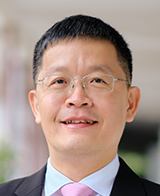 |
|---|---|---|
| Affiliation/Title | Associate Professor, Ph.D. Department of Food Engineering School of Chemistry and Life Sciences Hanoi University of Science and Technology (HUST) |
|
| Country | Socialist Republic of Viet Nam |
|
| Research Title | "Advance Production Technology to Reduce CO2 Emission and Manufacturing Cost in Ethanol Industry" | |
| Social issue | Ethanol is used largely in our daily life. The current technology for ethanol production from starchy material costs a lot of energy and releases a high amount of CO2. Thus, the need to apply advanced technology and closed-cycle production in ethanol industry is inevitable to meet the net zero and sustainable goals. | |
| Achievement of R&D | The trial of no-cook technology was carried out at industrial scale for potable ethanol production at the biggest ethanol plant in Vietnam. Compared to the current technology, our technology reduced 35% of steam used, 8% of water used, 30% of CO2 emission and 7.7% of production cost. | |
| Social Implementation | The use of no-cook technology in ethanol production could reduce the investment cost for equipment by combining three steps in one, reduce the production cost, CO2 emission and water use by 8%. Therefore, not only the ethanol producers could get more profits and become more competitive but also the farmers could get more benefits from this new and advanced technology. | |
| Social Impact, Contribution to the SDGs |
– The application of no-cook technology could help ethanol enterprises reduce CO2 emission by 30% and water used by 8%, that meets the plan of Vietnamese government to reach net zero by 2050. – The valorization of by-products, leads to closed-cycle production, will reduce wastewater treatment discharge to the environment. |
|
| Activities |
|
|
| Message from Awardee | Responsibility, creativeness, and perseverance are the keys features to upgrade technology in developing countries for sustainable development. | |
|
Outstanding Innovation Award
 "ITS Djamoe: Translating Science of Indigenous Knowledge for Advancing Humanity"  Target 1.1 |
||
| Name | Sri Fatmawati |  |
|---|---|---|
| Affiliation/Title | S.Si., M.Sc., Ph.D. Department of Chemistry Faculty of Science and Data Analytics Sepuluh Nopember Institute of Technology (ITS) |
|
| Country | Republic of Indonesia |
|
| Research Title | "ITS Djamoe: Translating Science of Indigenous Knowledge for Advancing Humanity" | |
| Social issue | Indonesia is facing health issues among its impoverished population, particularly in rural and remote areas where financial constraints hinder access to healthcare. Communities in these regions heavily depend on traditional Indonesian medicines, known as Jamu, for their health support. Additionally, they cultivate and sell Jamu’s raw material as a means of sustaining themselves. | |
| Achievement of R&D | We have successfully developed Menitemu, an herbal medicine product within the ITS Djamoe. Its primary components, Meniran (Phyllanthus niruri) and Temulawak (Curcuma xanthorriza), act as potent immunomodulatory agents. Menitemu has exhibited remarkable efficacy in boosting the immune system, surpassing normal cell performance. Immunomodulator tests conducted on HT29 cells have confirmed Menitemu's ability to enhance the body's immune resistance. Buoyed by positive community feedback over 34 provinces, we are now poised to scale up production for the Indonesian market. Working together with people in Kelud mountain and it has garnered international recognition, being introduced to scientists and high-profile officials from over 30 countries. |
|
| Social Implementation | We actively engaged in promoting herbal medicine in the hillsides of Kelud mountain, Kediri, East Java since 2017. Our initiative involved establishing connections with GMP industry in Kediri. Collaborating with PT. Payung Pusaka Mandiri – Jamu Industry, we shared our research and worked together to enhance the Jamu production process. By educating the local herbal farmer and precisely selecting premium raw materials and collaborating with their Research and Development staff, we improved the overall production process and applied these refinements to production. This collaboration has led to the emergence of ITS Djamoe, a manifesto of herbal medicine products stemming from these collective efforts. | |
| Social Impact, Contribution to the SDGs | Through ITS Djamoe, we are fostering global development in collaboration with industries that ultimately contribute to society. Our focus extends beyond the production of advanced wellness products to encompass the empowerment of communities, biodiversity preservation, and the promotion of Jamu Science education (SDGs 1, 2, 3, 4, 6, 7, 8, 9, 11, 12, 13, 15). | |
| Activities |
|
|
| Message from Awardee | On behalf of ITS Djamoe, receiving this award serves as a motivating force for us to persist in the relentless pursuit of excellence and to make meaningful contributions to individuals living in remote areas. This acknowledgment ignites my drive to continuously elevate this achievement and contribute positively to the mission of ITS Djamoe – Advancing Humanity. | |
|
Outstanding Innovation Award
 "Developing Sustainable Disease Control Strategies for Sesame Production against Pigeon Pea Cyst Nematode"  Target 1.3 1.5 |
||
| Name | Yu Yu Min | 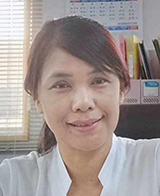 |
|---|---|---|
| Affiliation/Title | Professor Department of Agricultural Microbiology Yezin Agricultural University (YAU) |
|
| Country | Republic of the Union of Myanmar |
|
| Research Title | "Developing Sustainable Disease Control Strategies for Sesame Production against Pigeon Pea Cyst Nematode for Green Food Technology" | |
| Social issue | Sustainable agriculture needs sustainable management. Small scale farmers cannot try even for chemical nematicides in Myanmar. There is an urgent need for effective control measures against cyst nematode damage that will contribute to sesame productivity, improve soil health, reduce soil chemical pollution, and increase society's awareness of healthier living. | |
| Achievement of R&D | Crop rotation would be an important countermeasure to control plant PPN such as pigeon pea cyst nematode and Meloidogyne spp., both economically important pests for sesame and pulses production. However, to control cyst nematode in sesame field not rotated with rice, use of green manure would be an important counter measure. We observed negative impact on nematode densities when soil was grown and mixed with pigeon pea, cow pea, green gram, black gram, sunn hemp and marigold and the highest reduction was observed when marigold was grown for two months and then incorporated. | |
| Social Implementation | The counter measure that will be developed in this research will spread to social implementation for green food technology through means such as publishing publications, making recommendations to stakeholders, and training extension workers and farmers through preparation of demonstration plots at Nay Pyi Taw. We recommend farmers to cultivate green manure cover crops after the sesame harvest season, which promotes the hatching of cysts and decrease of nematode density through starvation in the soil. | |
| Social Impact, Contribution to the SDGs | The inexpensive and environmentally friendly nematode control method recommended here will lead to increased yields, stable production of sesame, and in turn secure a stable income for small sesame farmers (SDG Goal No. 1, Target 1.3). Use of cover crops will help to conserve farmland (soil erosion, water retention) (Target 1.5). | |
| Activities |
|
|
| Message from Awardee | Transforming indigenous knowledge into scientific notation is essential for conducting innovative research. Because only innovative research can inspire our society to have a good quality of life. | |

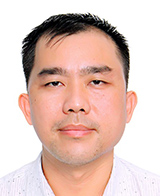 "Lighting Technology for a Sustainable Future"  Target 7.b |
|
| Name | Anh Doan Quoc Nguyen |
|---|---|
| Affiliation/Title | Ph.D. Faculty of Electrical and Electronics Engineering Ton Duc Thanh University (TDTU) |
| Country | Socialist Republic of Viet Nam |
| Research Title | "Lighting Technology for a Sustainable Future" |
| Summary For the fishing industry, the significant consumption of ship fuel and low fishing efficiency using outdated fishing lamps can be perceived as a lasting issue. Our significant project in Binh Thuan province succeeded in utilizing novel LED specifically designed for fishing, thus assisting in saving substantial amounts of oil. Throughout this project, the new LED devices were installed in over thirty fishing ships utilizing five different fishing methods. Based on the project data, the designated ships managed to save up to fifty percent of their oil fuel with less strain on ship generators, which helps cut down investment costs. The LED efficiency encourages fishermen to adopt newer, better technology, which contributes to the lower generation of UV ray and CO2 emissions. |
|
 "Open-Source Hydro Technology  Target 7.1 7.2 7.a 7.b |
|
| Name | Isidro Antonio III Valdivia Marfori |
|---|---|
| Affiliation/Title | Assistant Professor Department of Mechanical Engineering De La Salle University (DLSU) |
| Country | Republic of the Philippines |
| Research Title | "Open-Source Hydro Technology A Small-Scale Hydro Technology in the Philippines Free for All" |
| Summary In the Philippines, there are still many communities who have no access to electricity. Small scale hydro technology can provide clean and affordable electricity to rural communities. The Open-source hydro technology can provide the equipment necessary for small scale hydropower. In contrast to proprietary technology, open-source technology allows it to be used by all with only minimal skills and tools. The technology is flexible and can be customized to suit the builder’s skills and available materials. Open-source hydro technology was first implemented as turbine units in several micro-hydro power plants. The technology was then improved to become cheaper and more inclusive. The Open -source Hydro Technology not only aims to help in the SDG goals 1 (no poverty) and 7 (affordable and clean energy), it also aims to empower the end-user giving them the capacity not just to provide for their own energy needs but also for others. |
|
 "ElectriPHI Project: Electrification Planning in Small Off-grid Islands in the Philippines"  Target 7.1 7.2 7.3 7.a 7.b |
|
| Name | Joey Duran Ocon |
|---|---|
| Affiliation/Title | Professor Department of Chemical Engineering University of the Philippines Diliman (UPD) |
| Country | Republic of the Philippines |
| Research Title | "ElectriPHI Project: Electrification Planning in Small Off-grid Islands in the Philippines" |
| Summary SDG 7 advocates for affordable, reliable, and sustainable access to electricity for all. However, there are around 789 million people worldwide without electricity, with around 4.7 million people in the Philippines alone. The ElectriPHI Project seeks to develop electrification planning tools and generate research results to aid policymakers and stimulate private sector participation. One of our project’s outcomes is ISLA, our in-house microgrid modeling tool written in Python 3. Another defining feature of our research is the multidisciplinary approach that we take to address the issue of promoting affordable and sustainable electricity generation in off-grid islands. Ultimately, our goal is to develop actionable insights that can inform policy and investment decisions to improve energy access in these areas and contribute to sustainable development. Since 2016, we have also been working closely with a private company who deployed solar PV-diesel-battery microgrids, leading to a brighter future in the lives of the islands’ residents. |
|
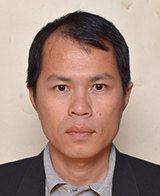 "Development of an Efficient Combustion for Burning Low-Grade Fuel Derived from Gasification Process"  Target 7.2 7.3 7.a 7.b |
|
| Name | Lemthong Chanphavong |
|---|---|
| Affiliation/Title | Dr. Mechanical Engineering National University of Laos (NUOL) |
| Country | Lao People's Democratic Republic |
| Research Title | "Development of an Efficient Combustion for Burning Low-Grade Fuel Derived from Gasification Process" |
| Summary The focus of this research is to fulfill the gap of premixed swirl-like cyclone combustion of low-grade biomass or producer gas (PG) fuel and the combustion process is utilizing modern combustion technique called “flameless reaction regime”. PG fuel generated by air-brown biomass gasification process is an alternative fuel for replacing fossil fuel or traditional biomass combustion systems in heating process and energy production. Since utilizing biomass waste as feedstock for producing PG fuel based on the gasification process, this system can be indirectly solved environmental concerns. Therefore, waste is considered a valuable resource to produce eco-friendly energy. When this system is applied widely, it can be contributed to SDGs of No. 7, especially Target 7.2 for increasing substantiality by sharing renewable energy and improving energy efficiency (Target 7.3), accessing clean energy research (Target 7.a), and upgrading energy technology in the developing countries (Target 7.b). |
|
 "Greenes: Greening the Future by Energy Harvesting Solutions from Ambient Sources"  Target 7.2 7.3 7.a 7.b |
|
| Name | Minh Thuy Le |
|---|---|
| Affiliation/Title | Associate Professor Department of Automation Engineering School of Electrical and Electronic Engineering Hanoi University of Science and Technology (HUST) |
| Country | Socialist Republic of Viet Nam |
| Research Title | "Greenes: Greening the Future by Energy Harvesting Solutions from Ambient Sources" |
| Summary Developing and developed countries face critical energy challenges due to unpredictable climate changes and excessive energy demands. Our Greenes solutions address these issues by harvesting energy from various waste energy sources in our environment, including electromagnetic waves (GSM/3G/4G/5G/Wi-Fi), solar, triboelectric, and thermal electricity with up to 55% conversion efficiency. We explored the potential of combining radio-frequency energy with solar, mechanical, or thermal sources to enhance the harvested energy further. This hybrid approach shows promise for powering battery-less electronic devices. These solutions are cost-effective and easily integrated into wireless devices, allowing them to be self-powered by clean and environmentally friendly energy sources. Greenes contributes directly to Goal 7, which focuses on renewable energy expansion and enhanced energy efficiency. We have successfully implemented Greenes devices in three telemonitoring system applications. Moreover, our projects contribute to solving the issues of environmental preservation, agricultural advancements, and improvements in human health. |
|
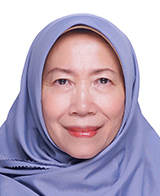 "Development of Livestock and Environmentally Friendly Sustainable Alternative Disinfectant (SDA)"  Target 1.3 1.5 |
|
| Name | Nurzainah Ginting |
|---|---|
| Affiliation/Title | Dr. Animal Science University of Sumatera Utara (USU) |
| Country | Republic of Indonesia |
| Research Title | "Efforts to Find Alternative Antibacterial Solutions as Bio-Disinfectants for Livestock and the Environment" |
| Summary Bacterial attacks on livestock cause losses to farmers and contaminate the environment. This phenomenon is driving research about antibacterial solutions. Inadvertently, it turns out that this solution has many benefits, including suppressing the development of bacteria and viruses in livestock. Small farmers benefit from this solution because their animals are protected from diseases such as Mastitis, Colibacillosis, Foot and Mouth Diseases (FMD), also Scabies. In addition, the solution can be used to clean the home environment, inside and out. The answer can also improve water quality. This solution is processed through fermentation and requires fruits unsuitable for sale, preferably containing protease enzymes. Mothers and girls can make this solution, referred to by the inventor as a Sustainable Alternative Disinfectant (SDA). SDA can help SDG Goal No. 1, 3, 5, 6 and 13. ToT how to make the solution has been conducted online through networking, namely UI Greenmetric, to all regions of Indonesia. SDA is also already socialized to ASEAN countries. Hopefully, SDA can help create a better environment for livestock, water, and humans. Inventor consistently conducts research. She is also consistent in doing community service. She has received 3 patent certificates from the Directorate General of Intellectual Property related to her findings and proposes 3 other patents. |
|
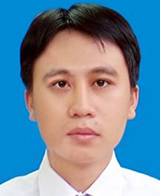 "Power Electronics - The Key Technology for Solar Photovoltaic (PV) Systems"  Target 7.2 7.a 7.b |
|
| Name | Phuong Hoang Vu |
|---|---|
| Affiliation/Title | Associate Professor, Lecturer Department of Automation Engineering School of Electrical and Electronic Engineering (SEEE) Hanoi University of Science and Technology (HUST) |
| Country | Socialist Republic of Viet Nam |
| Research Title | "Power Electronics - The Key Technology for Solar Photovoltaic (PV) Systems" |
| Summary Solar energy is a green energy source that not only helps reduce the electricity shortage but also contributes to improving our living environment due to less greenhouse gas (GHG) emissions. One of the key enablers for the stable, reliable, efficient, and safe integration of the potential solar power sources into the national grid as well as operation them independently is the power electronic converter. High-performance converters are essential to connect renewable energy sources to the loads, grids, and energy storages well. Hence, high-performance power electronics and their applications in renewable energy systems have attracted great attention. The objectives of our R&D are to acquire know-how in solar power systems as well as renewable energy in general, and then apply the research outcomes in actual energy systems. Research works on the characteristics of solar energy sources, the highly efficient and sustainable power electronic converters, and power quality standards for solar energy systems have been conducted. Advanced inverter topologies such as Z-source and T-type inverters along with advanced control designs are researched to achieve high power quality in grid-connected and standalone distributed solar power generation. Finally, all the power converter designs for solar energy systems have been validated by specialized simulation software and prototype hardware. The research results have been verified by our relevant published papers, patents, and projects. Our R&D contributes to the SDG goals, especially SDG goal 7 "Affordable and clean energy" with target number 7.2, target 7.a and target 7.b. |
|
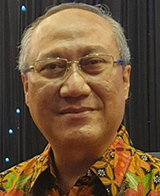 "INOSEC19: A Covid-19 Screening Tool to Detect Patients with Virus (Positive) or Healthy (Negative) through the Smell of Axillary (armpit) Sweat"  Target 1.3 1.4 1.5 |
|
| Name | Riyanarto Sarno |
|---|---|
| Affiliation/Title | Professor, Head of Laboratory Intelligent Information Management Informatics Sepuluh Nopember Institute of Technology (ITS) |
| Country | Republic of Indonesia |
| Research Title | "INOSEC19: A Covid-19 Screening Tool to Detect Patients with Virus (Positive) or Healthy (Negative) through the Smell of Axillary (armpit) Sweat" |
| Summary Indonesia and other countries implemented mandatory Covid-19 test using PCR to restrict the spread of the SARS CoV-2 virus, but the price for doing one test was quite expensive, so people with low and middle income could not afford to do Covid-19 test. Riyanarto developed INOSEC19 to detect a person suffering from Covid-19. INOSEC19 uses samples from axillary sweat odor to detect positive/negative Covid-19. Patent and other IPR have been submitted. Also, conference and journal articles have been published. INOSEC19 social implementations are promoting to the Minister of Defense, the Minister of Health, and Minister of Education, Culture, Research, Technology and Higher Education of the Republic of Indonesia; and passing the Calibration Test by the Health Facilities Security Center, Indonesia. The INOSEC19 is cheap, non-invasive, and affordable testing cost about USD $2 per person. Therefore, the innovation helps people health especially low and middle-income people (achieving SDG 1 “no poverty”)
|
|
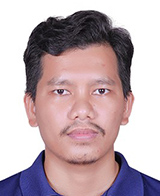 "Development of Innovative Microgrids and Smart Grids in Cambodia: Tools, Case Studies, and Testbed Platform"  Target 7.1 7.2 7.3 7.a 7.b |
|
| Name | Vannak Vai |
|---|---|
| Affiliation/Title | Assistant Professor Electrical and Energy Engineering Institute of Technology of Cambodia (ITC) |
| Country | Kingdom of Cambodia |
| Research Title | "Development of Innovative Microgrids and Smart Grids in Cambodia: Tools, Case Studies, and Testbed Platform" |
| Summary Cambodia currently faces a lack of access to electricity for remote and rural villages due to the high investment costs of grid infrastructure. Also, the existing traditional grids with bulk power generation and fossil fuel-based energy sources are still in operation and under investigation, resulting in high operating costs and unsustainability. To meet the needs of users, providers, and stakeholders in terms of economic, security, environmental, and sustainability of electricity use, appreciated architecture and operation for distribution systems and microgrids integrating distributed energy resources (DERs) close to the end-users with management systems are essential to investigate. We have developed and tested several case studies with our optimization algorithms on innovative microgrid and smart grid concepts such as AC/DC optimal topology, hosting capacity of DERs, and network reconfiguration under normal and abnormal conditions. Our R&D in innovative microgrids and smart grids will provide benefits to users, distributors, producers, and stakeholders in the supply of electricity with affordable and clean energy through DERs, energy efficiency, and management systems. The digital tools developed will also help them to build and evaluate their specific design systems automatically and efficiently. In addition, teaching the concept of “Innovative Microgrids and Smart Grids” will also be provided to students/researchers with both simulation and experiment at ITC. Our R&D not only responds to sustainable development goals (SDG) 7 “Affordable and Clean Energy”, but also to SDG 13.3. for improving education on climate change mitigation with our integration of renewable energy sources. |
|
Reference link
The Hitachi Global Foundation
Office of The Hitachi Global Foundation Asia Innovation Award